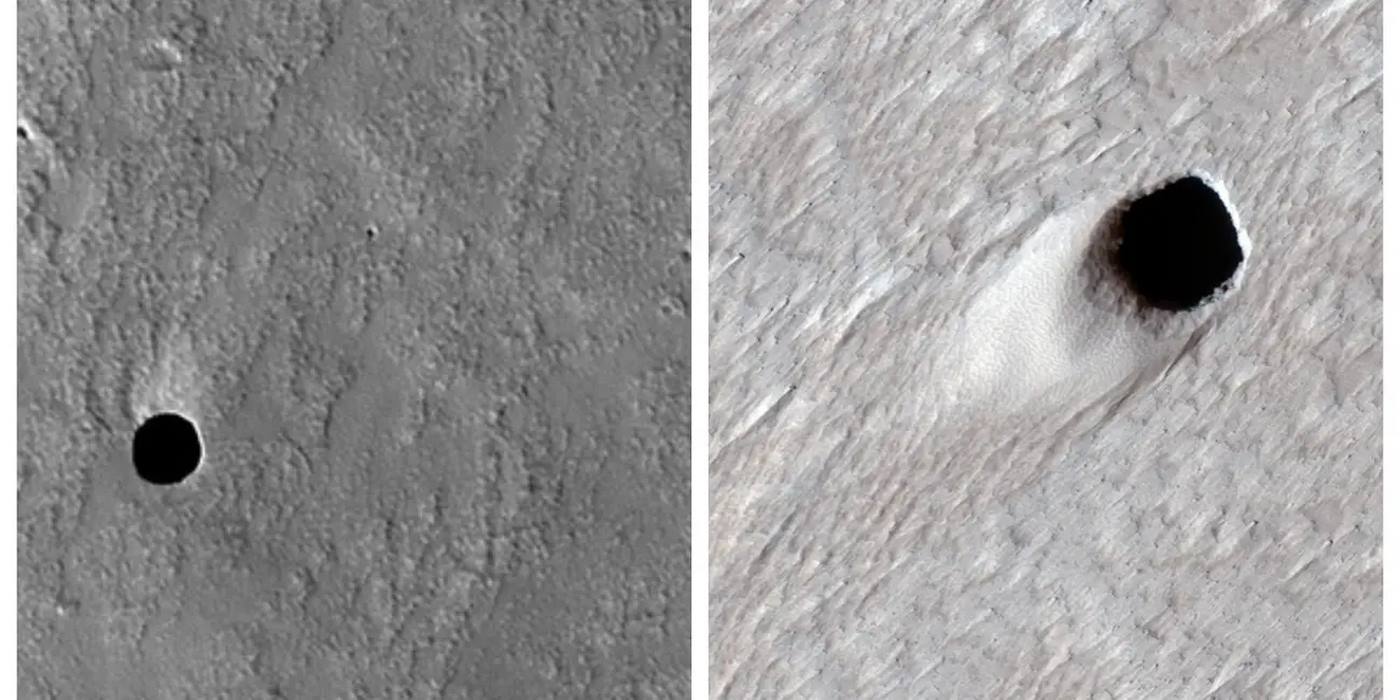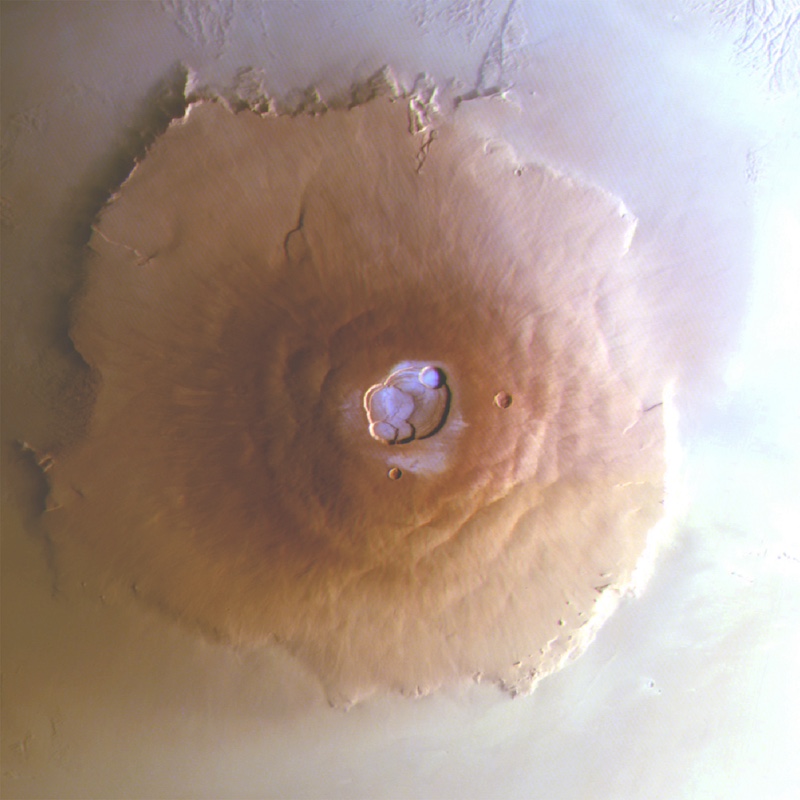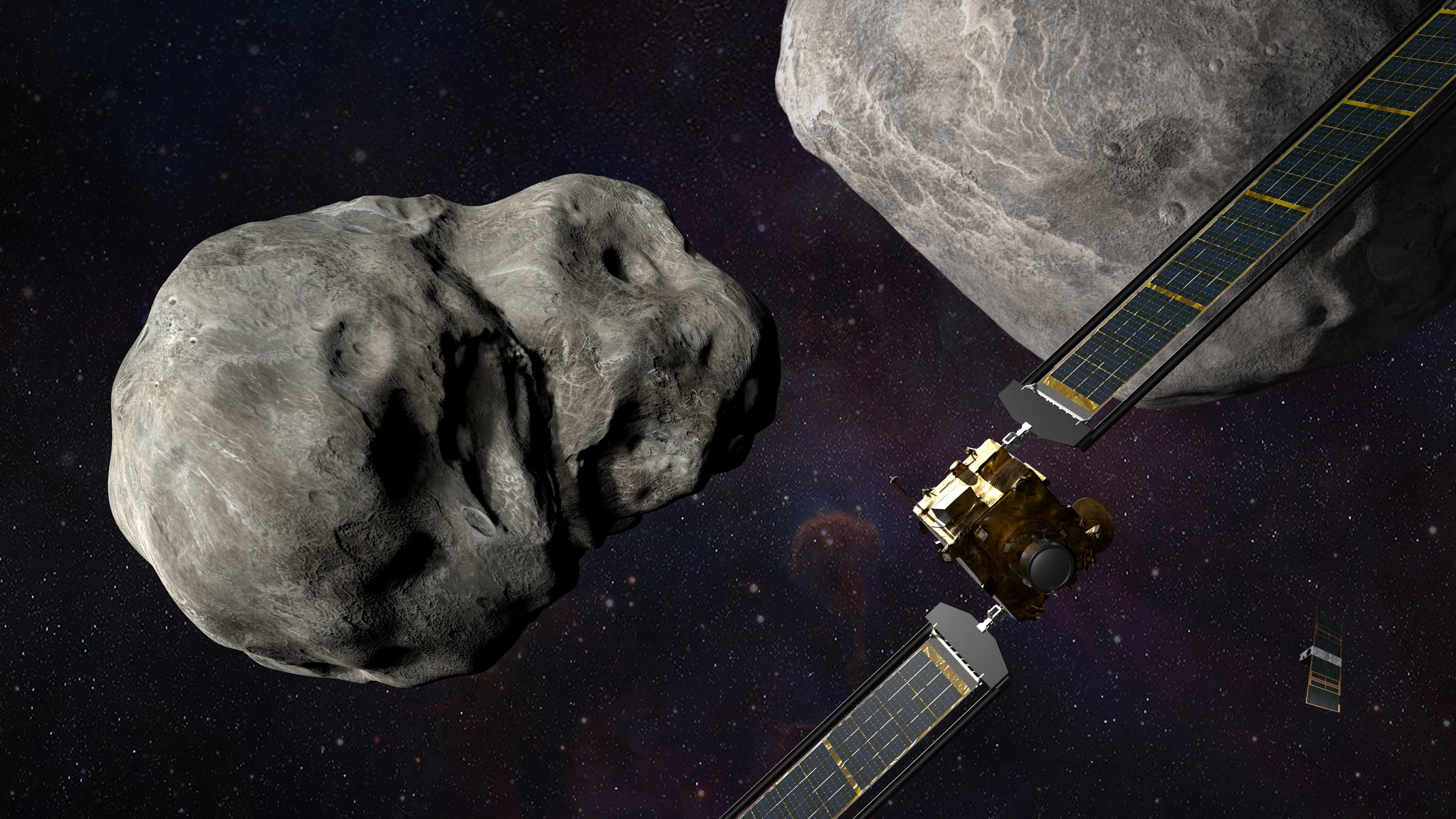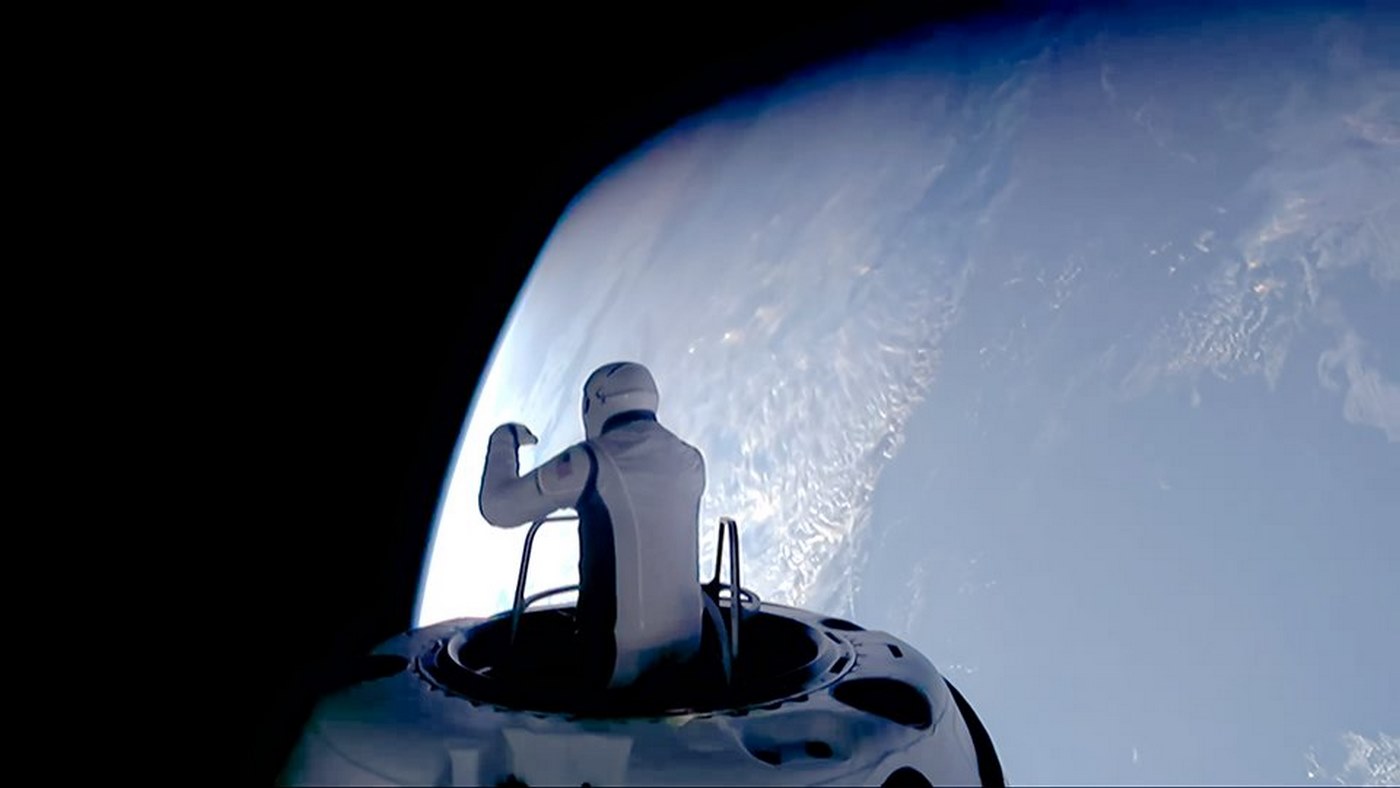Yet more evidence for liquid water on Mars has been uncovered by a European space probe in the form of thousands of gallons of frost within the calderas of Martian volcanoes.
These patches of water frost were described by the international astronomy team as a “significant” first after being identified on the volcanoes of the Tharsis region.
They say their discovery, described in the journal Nature Geoscience, challenges previous assumptions about the Martian climate and is a major breakthrough in the search for lifeforms on other planets.
In a separate discovery by a different probe, another of Mars’ volcanic features has come to light as a potential goldmine of knowledge about the planet. A series of mysterious holes about 10 feet across that were recently reexamined are believed to be skylights—where the regolith of Mars collapsed down into a lava tube.
The images were taken by the Univ. of Arizona’s High-Resolution Imaging Science Experiment, or HiRISE camera, back in 2022 but when one of them surfaced on an image of the day feature, it reignited speculation about the origin of the mysterious holes found on the Arsia Mons volcano—also in the Tharsis region.
Frost to frost
150,000 tons of water swaps between the surface of Olympus Mons and the atmosphere each day during the cold seasons—the equivalent of around 60 Olympic-size swimming pools.
This is possible because Olympus Mons is the largest volcano in the solar system, and rises 3 times the height of Mount Everest, and from lee-to-windward, it’s as wide as France.
Discovered by the Color and Stereo Surface Imaging System (CaSSIS) onboard the European Space Agency’s Trace Gas Orbiter, The study suggests that the frost is present for only a few hours after sunrise before it evaporates in sunlight.
“We thought it was improbable for frost to form around Mars’ equator, as the mix of sunshine and thin atmosphere keeps temperatures during the day relatively high at both the surface and mountaintop—unlike what we see on Earth, where you might expect to see frosty peaks,” said study leader Dr. Adomas Valantinas, of Brown University, Rhode Island.
“What we’re seeing may be a remnant of an ancient climate cycle on modern Mars, where you had precipitation and maybe even snowfall on these volcanoes in the past.”
The research team proposes that the way the air circulates above these mountains creates a “unique” microclimate that allows the thin patches of frost to form in very thin layers, about the width of a human hair.
They believe modeling how the frost forms could allow scientists to reveal more of Mars’ remaining secrets, including understanding where water exists and how it moves, as well as understanding the planet’s complex atmospheric dynamics, which is essential for future exploration and the search for possible signs of life.
To that end, Dr. Valantinas now plans to look at ancient hydrothermal environments that could have supported microbial life on Mars.

Mole Martians
These holes discovered by the HiRISE camera are believed to be a function of the ground caving into a lava tube below.
Underground lava tubes are strange places on Earth, but on Mars, it’s believed they could offer a readymade shelter from radiation that astronauts may be able to avail themselves of in future missions during solar storms.
“There’s more than one of these [pits] on Mars that we’ve seen,” Brandon Johnson, a geophysicist at Purdue University, told Business Insider. “But they’re really interesting because they’re places where astronauts might be able to go and be safe from radiation.”
Because of this shelter, they might also be a promising place to look for signs of microbial life. Lacking any significant or total magnetosphere, the barrier that protects life on Earth from solar radiation, the bosom of the Martian interior would be the only source of natural protection available.
Furthermore, while the surface of Mars can plunge into temperatures from minus 80 to minus 160 degrees Fahrenheit, living underground may lifeforms avoid freezing to death. On Earth, the underground environment is essentially always 63°F, no matter where you go in the world.
On Mars, Johnson explains that it’s not known what the underground temperature would be, but it’s not a stretch to imagine something similar.
Propositions are forming to send a specialist rover to Mars to drop down into these skylights with the aim of studying the environment therein. While rovers have been until this point limited in scope to wheeled vehicles, testing is ongoing of serpentine rovers that ‘spiral’ across the ground rather than roll; allowing them to travel up and down walls, over the most uneven terrain, and even on ice. They’re being designed primarily for a hypothetical expedition to Saturn’s icy moon of Enceladus, but there’s no reason why snake probes couldn’t be used to explore lava tubes on Mars—it would probably be a simpler place to start anyway. WaL
We Humbly Ask For Your Support—Follow the link here to see all the ways, monetary and non-monetary.
PICTURED ABOVE: Olympus Mons seen here in an image from the Trace Gas Orbiter with frost on its summit. PC: ESA DLR FU Berlin University of Berlin.



